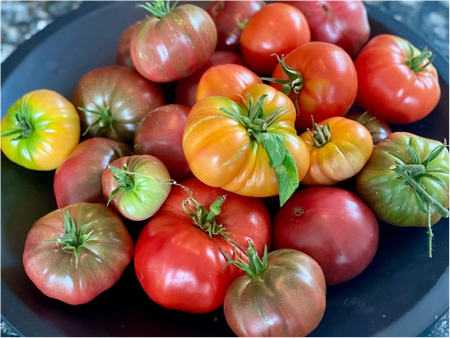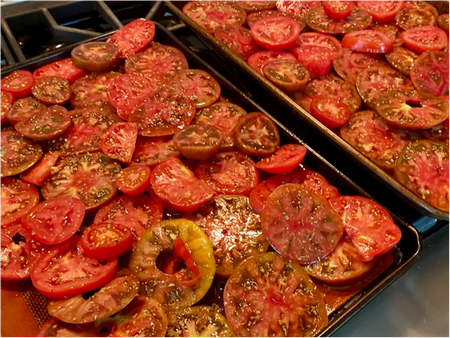From the UC Blogosphere...
Ready for a Saturday Night of Bioblitz at the UC Davis Arboretum?
Like to participate in an evening City Nature Challenge Bioblitz on the UC Davis campus and search for insects?...
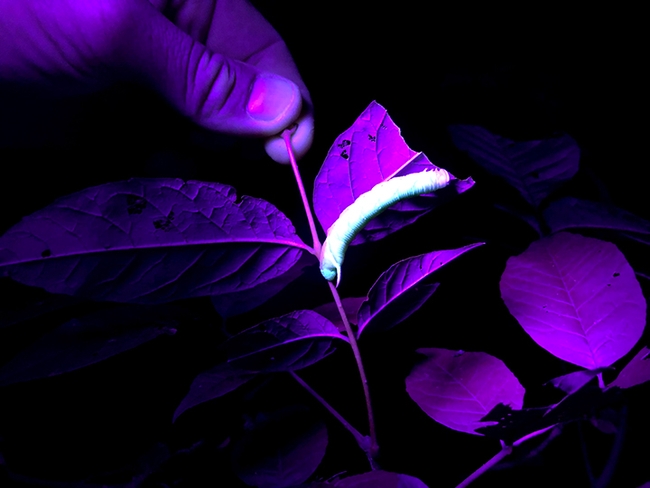
A waved sphinx (Ceratomia undulosa) caterpillar glows under ultraviolet light. (Photo by Grace Horne)
Revisiting the Issue of Monarch Butterflies Missing from California Classrooms
A monarch butterfly caterpillar goes through five stages or instars before it J's and becomes a jade-green...
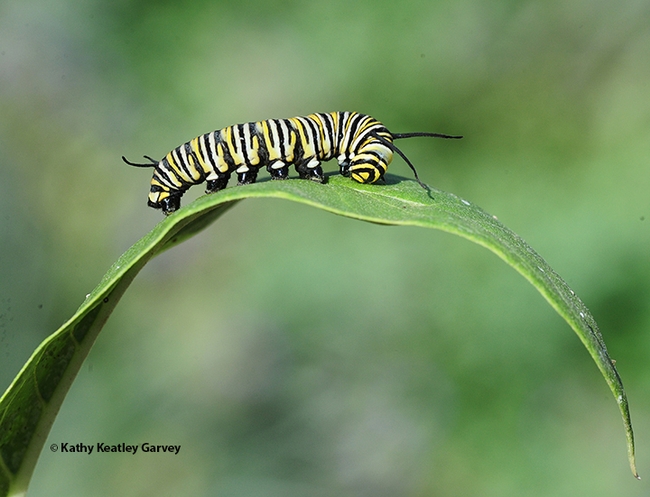
A monarch caterpillar crawling on a milkweed leaf. (Photo by Kathy Keatley Garvey)
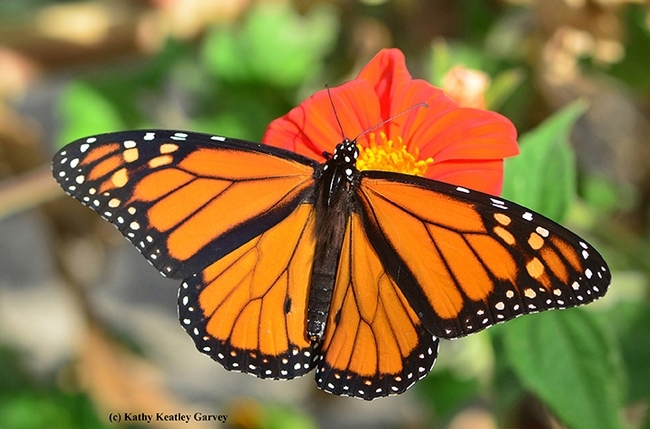
A male monarch butterfly foraging on a Mexican sunflower (Tithonia rotundifola) in a Vacaville pollinator garden. (Photo by Kathy Keatle Garvey)
'Dr. Zac' to Present UC Davis Seminar on Honey Bee Research, Life Experiences
"A lot of students take a gap year between their undergrad and grad program," says honey bee scientist Zac Lamas,...

Honey bee scientist Zac Lamas, a National Institute of Food and Agriculture (NIFA) postdoctoral fellow with the USDA's Agricultural Research Services.
Decisions, Decisions: Solar Eclipse or a Bumble Bee?
What insects did you see during the Solar Eclipse, dubbed "The Great North American Eclipse?" And what were they doing? In...
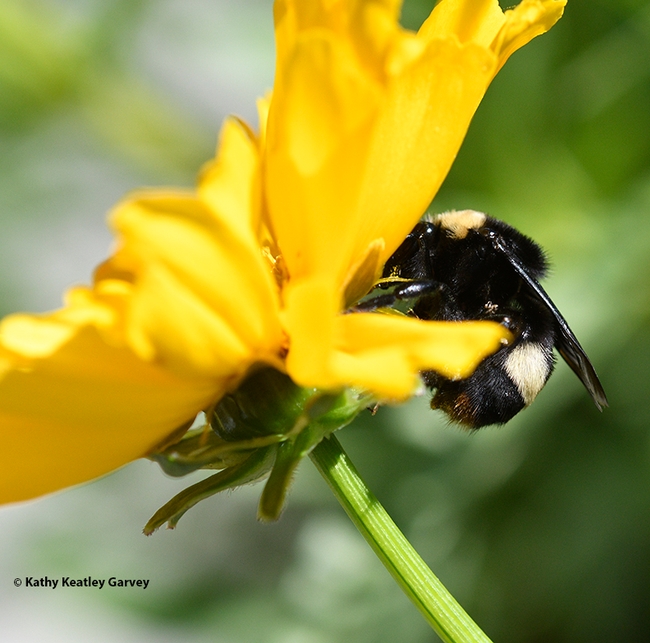
A queen bumble bee, probably a Bombus californicus, forages on a Coreopsis during the April 8th solar eclipse. (Photo by Kathy Keatley Garvey)
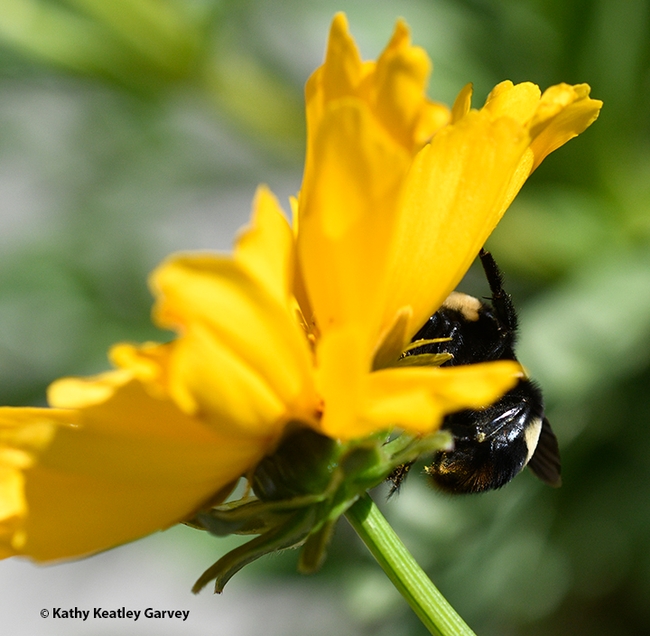
Brace yourself! A bumble bee appears to hold up a petal of the Coreopsis. (Photo by Kathy Keatley Garvey)
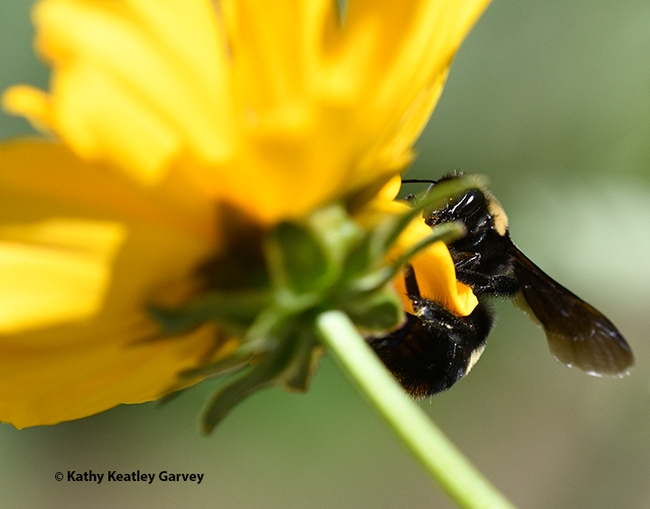
A little twist here, a little twist there. The bumble bee adjusts. (Photo by Kathy Keatley Garvey)
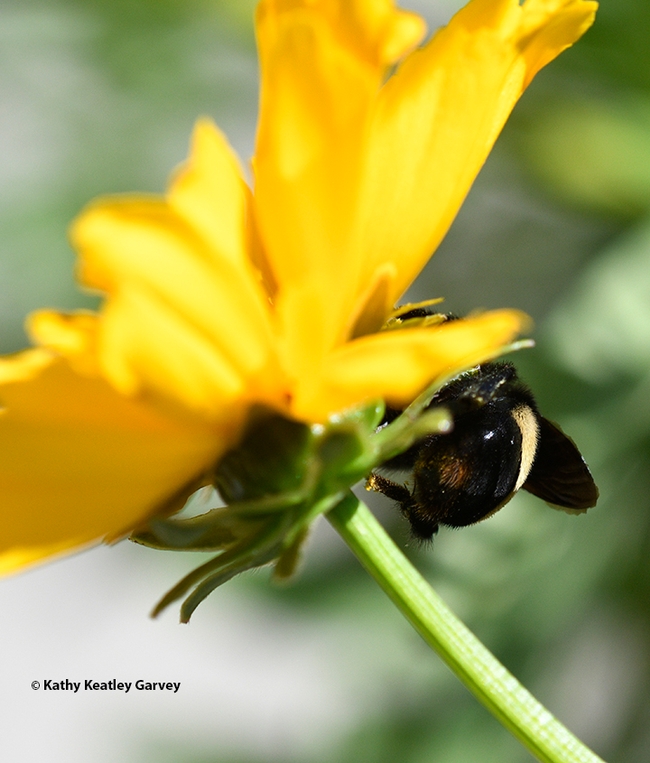
The end! The bumble bee is unaware of the photographer--or the solar eclipse. (Photo by Kathy Keatley Garvey)
You Can't Choose a Bad Tomato
The 2024 Great Tomato Plant Sale is just around the corner, from April 13 to April 27, in three locations this year: Walnut Creek, Antioch and Richmond. This year's sale will feature 67 varieties of tomatoes chosen not only for flavor, but also for their ability to thrive in our Contra Costa County climate. Whether you're growing in beds or containers, in the heat of East County, the cool fog of West County, or somewhere in between, the Great Tomato Plant Sale will have a variety that will work great for you!
With so many choices, how do you know where to start? One possibility is to think about how you plan to use your tomatoes. Do you want to eat them straight off the vine? Do you imagine using them in fresh salads or hearty sandwiches? Maybe you want to make sauce or tomato paste, or are thinking about roasting, canning, or frying them. For those of you with certain culinary goals in mind, remember that tomatoes can be specialists. Each has its own unique flavor ranging from sweet and fruity to acidic and tangy. Some are meaty, some juicy, some sturdy enough to slice for a sandwich. Here are some of our favorites.
Fresh Snacks
Pop them in your mouth as “garden candy” or add to a salad or skewer. Cherry and grape tomatoes or small fruited slicer tomatoes are perfect for bite-sized snacks, kebabs, or including on a vegetable tray.
• Orange Paruche—it glows a brilliant, neon orange. One inch round fruits are thin-skinned and crack-and-disease-resistant with a superb flavor.
• Black cherry—dusky purple-brown grape-like 1” tomatoes with a rich, complex flavor.
• Sun sugar—very sweet, fruity-tasting orange cherry tomatoes in long clusters on vigorous plants.
• Tommy Toe—bright red and prolific with excellent flavor and plenty of juice.
• Yellow pear—wonderful in salads or as garden candy with a delightfully sweet flavor.
Salads and Sandwiches
Slicers, some heirloom tomatoes, and beefsteak tomatoes all have varieties that are delicious when eaten fresh. Their high water content means they are not the best for cooking, but they hold together well, making them ideal for sandwiches. And they come in a variety of colors to add exuberance to a salad such as the Caprese. Your choices will depend primarily on your growing conditions and your personal flavor preferences.
• Early Girl—4- to 6-ounce, bright crimson fruits with a tangy flavor.
• Black Sea Man—produces early and does well in containers. With attractive marbled flesh and a rich flavor.
• Aunt Ruby's Green—1 pound lime to yellow-green fruit with a superb fruity, slightly tangy taste.
• Caspian Pink—an incredibly sweet and juicy fruit that can reach one pound or larger. Great either fresh or cooked.
• Chocolate Stripe—these large tomato plants yield a big crop of mahogany colored fruit with dark, olive green-striping.
• Paul Robeson—7- to 10-ounce, blackish brick-red fruits with a sweet and smoky flavor.
Sauce, Paste and Canning
Look for thick flesh, rich flavor, tender texture, mild acidity, and low water content. These tomatoes, often known as paste tomatoes, have been developed for sauces. They peel easily and cook well, making a thick and delicious sauce quickly. Varieties include Roma and the famous Italian cooking tomato, San Marzano.
• Granadero—attractive, bright red, 4- to 5-ounce tomatoes with very good flavor. These thick-walled fruits are ideal for fresh tomato sauces, salsas, and salads.
• La Roma III—high yields of 5- to 8-ounce plum tomatoes on healthy, disease resistant and vigorous vines.
• Big Mama—5-inch-long paste tomatoes that are meaty, easy to peel and have very few seeds.
• San Marzano—solid flesh is perfect for canning/freezing for rich pasta sauce all winter.
Roasting, Salsa
Have you ever wanted to make your own salsa? Perhaps roasting cherry tomatoes or topping tomato slices with parmesan cheese sounds like something you'd enjoy. Paste tomatoes make great salsa and all tomatoes can be roasted. Experiment, mix different types, roast and then puree them with the skins on. Toss them in with pasta, use them for sauce, or can them for next winter when you miss the flavors of summer.
You Can't Go Wrong
There's a lot more to learn about tomatoes. Some will fare better than others in the dry heat of East County; others will thrive in the cooler climate of West County. If you have limited space, try cherry tomatoes in containers or a compact determinate (bush) variety. If you want the harvest to spread out all summer, choose an array of varieties with different ripening dates, or grow indeterminate (vine) tomatoes which tend to produce all summer. Our website explains all the differences, and even provides a shopping list for planning. https://ccmg.ucanr.edu/EdibleGardening/GreatTomatoPlantSale/
Remember, you can't choose a bad tomato. Experiment and have fun!
All photos courtesy of Pamela Schroeder, Master Gardener and tomato lover.
Help Desk of the UC Master Gardeners of Contra Costa County (RDH)



